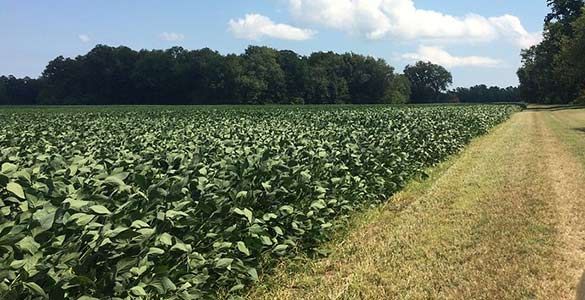
 Department of Conservation and Recreation
Department of Conservation and Recreation
Conserve. Protect. Enjoy.
 Department of Conservation and Recreation
Department of Conservation and Recreation
In addition to open-space easements, a variety of other tools are available to local governments to conserve land.
Parks and recreational facilities are generally owned outright by a local government or regional park planning body. Because of this, the amount of land and type of recreation available will vary greatly from community to community. For more information about parks in your locality, contact your local government planning office or parks and recreation department.
In Virginia, localities can elect to reduce the real estate tax burden on unimproved land. The Commissioner of the Revenue determines if the land is suitable for land use valuation. When the locality accepts the application for the land use valuation, the property tax is a reflection of productivity rather than on fair market value that results in substantially lower real property taxes on the land. Land use values are determined for:
The locality may take an individual property out of a reduced land use valuation when a landowner changes the use of the property (for instance, if the owner harvests timber with no provision to reforest, or if the property is being developed). Likewise, landowners may elect at any time to remove the property from land use valuation to take advantage of demand for development of the property. Although this taxation program does not provide for long-term conservation, it removes some of the financial pressure for sale and development of land.
Contact your local government to find out if this program exists in your community.
Localities can create these special districts with voluntary landowner initiative to temporarily reserve farm and forestland. These special districts are Agricultural, Forestal, or Agricultural and Forestal Districts. The districts enable localities to encourage the use of land for agriculture and/or forestry activities. Only landowners who agree to limit development of the property during the number of years the district is in effect, which is from four to 10 years, can initiate the district. At least 200 acres are required to form a district. Landowners have the right to remove their land from the district with no penalty when the term expires. To create a district of local significance, interested landowners ask the locality to establish the district, and the local governing body will then decide whether to grant the request. Lands in such districts have reduced taxes corresponding to land use rather than fair market value and are allowed exceptions to laws that would restrict farming or forestry in the district.
A locality can become actively involved in land conservation by developing and enacting an easement program or ordinance. These are usually called Purchase of Development Rights, or PDR, programs. A PDR program enables a locality to preserve working lands such as farms and working forestlands, as well as open space and natural areas by restricting future development of the land while permitting landowners to continue to use their land as they had been. To do this, localities can purchase conservation easements from private landowners. Localities can also accept donations of easements, in which case landowners are often eligible for tax incentives. For more information about PDR programs aimed at protecting working lands, see the American Farmland Trust website.
Twenty-two localities in Virginia have PDR programs.

Localities also have the power to create Transfer of Development Rights, or TDR, programs. These programs work well in communities that are planning for density in some areas while planning to keep other areas rural. In a TDR program, a Sending Property from the rural area gives up its development rights, which are transferred to a Receiving Property in the area planned for increased density. The developer of the Receiving Property compensates the owner of the Sending Property, and the Sending Property is then put under easement and conserved in perpetuity. The benefit of this program is that the local government can direct development away from lands with high conservation value without using government funds to pay for or incentivize conservation.
Soil and water conservation districts may hold easements directly or partner with conservation organizations as co-holders under Virginia law. Virginia has 47 SWCDs that address communities' needs regarding the conservation of water, soil and other precious natural resources. SWCDs were established to plan and implement programs to conserve soil, control and prevent soil erosion, prevent floods, and conserve, develop and manage water.
Since each SWCD is an independent, autonomous political subdivision of the state, each determines its degree of involvement in land conservation. Some actively accept land conservation roles, such as holding easements, others have little or no involvement in conservation easements. See this list of SWCDs.

